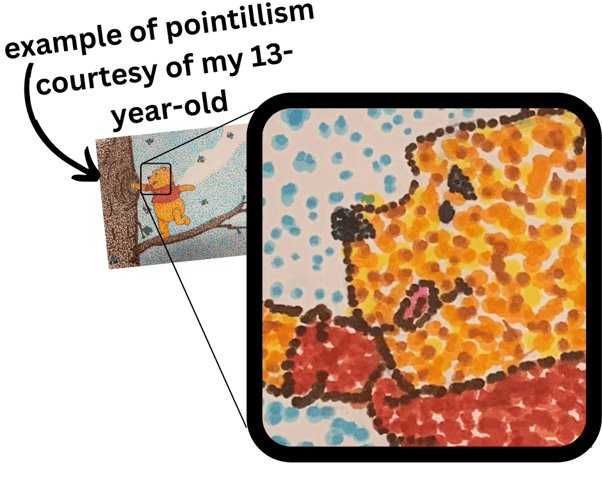This is one of those questions that people rarely ask, they just take for granted that they know how toner works. But when they do stop to question it, they often find it's not at all what they thought. You probably have a small ink or laserjet printer at home. You get your black and tri-color cartridges ordered through Amazon or Costco and your kids use all the ink up on some print out for a school project and you cry quietly into an empty wallet. This is most non-industry folks understanding about how prints or copies are made. Liquid ink goes on to the paper, it absorbs into the fibers and - wallah! - you have your print out.
The truth is that there's a little more to it. An inkjet uses a component known as a printhead. This printhead's job is to place very small dots of specific colors on the page, which when complete will render the image. Because of this fact there is a phrase called "dots per inch" (DPI) which correlates to how detailed a printers output can get. The more dots placed in a square inch, the more clear and detailed the print out can get. In fact, if you could zoom in on a print out with a really good magnifying glass, it would look similar to a painting technique called pointillism, where an artist uses dots instead of brushstrokes to create their work.

Toner, however, operates a bit differently. In fact, it operates completely differently. When you send a print job to your copier or MFP, the image is transferred to the machines drum unit in the form of positively charged ions laid out on the drums surface in the pattern of your print job. Using static electricity the negatively charged powder that we call toner is attracted to the positive ions on the drum. Then as they are rolled over the surface of the even more statically charged paper, they are laid down in the image desired. After that, the paper runs through what is called a fusing unit, which, you guessed it, melts plastic particles in the toner and fuses the image in place against the paper. This is why you may notice when you print from a copier or MFP, the document usually comes out warm to the touch, while a page printed off of an inkjet printer usually isn't.
So which is a better technology? It all really depends on what your printing needs are. Inkjet printers are much less costly upfront for the device and can dry fairly quickly for a cleaner output. However, toner allows for quicker actual printing, and because of the charged ion technology, can render much more precise and high quality print outs. Toner itself is also much less costly than ink, making it much more affordable to use per print, even if the device itself costs a bit more upfront. So for environments that print quite often - like an office - it is much more efficient and cost-effective to utilize a toner consuming MPF, while someone who only prints occasionally - like at home - an ink based printer would make much more sense.
Would you like a fun scene activity to do with your kids at home to better illustrate how ink and toner work? Download our STEM activity page on the topic here.



